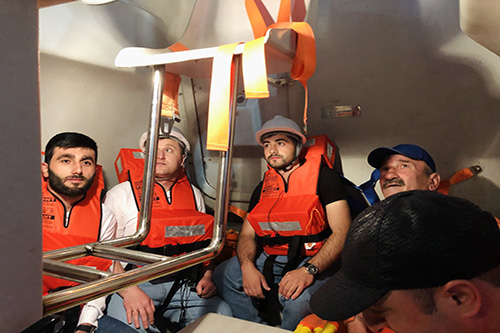Training Program covers the requirements of the STCW Convention.
Passing Theoretical part of training program, trainee must:
- Be familiar in different emergency situations like: collision, grounding, fire etc.;
- Be familiar in rescue operations with helicopter and know about rescue equipment;
- Be familiar to different distress signals;
- Need to understand the need for high-speed lifeboat maintenance, including emergency repairs, inflated inflatable high-speed boat compartments inflow and air release ;
- Identify search and rescue methods and environmental factors that affect its performance;
- Be aware of fast rescue boat specific characteristics, equipment and limitations;
Passing Practical part of training program, trainee must:
- Be able to safe jump from the high at least 4.5 m wearing life-jacket and immersion suit;
- Be able to board the life-raft after inverting to the right position;
- Be able to use emergency equipment;
- Be able to use emergency radio equipment (EPIRB, SART), portable radio stations (VHF);
- Be able to swim in special equipment;
- Be able to manage and monitor the launching and lifting of a high speed rescue boat;
- Be able to turn the capsized rescue boat in the upright position Entry Standards
In order to entry into the presented training program, trainee must represent:
- Certificate of Competency, Education Certificate or Certificate of Proficiency;
- Seamen’s book or Civil passport or ID;
- Medical Certificate or medical certificate form 100(for coastal water area seafarers’);
- The Certificate confirming not less than 6 months sea going practice experience on a relevant vessel.
| Duration | 31.5 hours |
| language | English |
| Students | 1-12 |
| Quizzes | 41 |

Course Features
- Lecture 0
- Quiz 0
- Duration 10 weeks
- Skill level All levels
- Language English
- Students 0
- Assessments Yes






